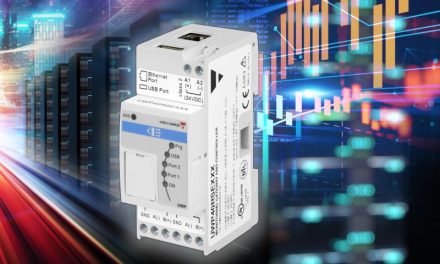The UK is currently facing a national crisis over soaring wholesale gas and electricity prices. The energy industry has warned that energy bills could rise by as much as 50% in the spring. Gas and power prices have increased to unprecedented levels, creating a challenging operating environment for every business and consumer. In this climate, companies need to look at the controllable factors—in this case, reducing and optimising energy consumption.
On average, 30% of the energy consumed in commercial buildings is wasted. This signifies a massive opportunity for facilities to thus reduce their energy consumption costs by 30% by identifying and reducing wasted energy.
Smart building technology gives companies and owners greater control over the building’s environment and operations, including its energy operations. These connected solutions can be used to identify parts of the building where energy is being wasted and locate where costs can be minimised. In addition, pre-defined automations can ensure that energy is only being used when it is needed. Smart building systems can be retrofitted to existing buildings, which means they are within reach without moving or building new premises.

Saving on your energy costs is as easy as IoT
By using the Internet of Things (IoT) to connect your electrical and mechanical systems to a cloud-based building energy management system, you’ll have access to data and insights that offer actionable insights for innovations and cost-saving solutions.
The IoT connects building systems through networked IoT sensors or devices, which then send and receive data between building systems and equipment. With all your building’s data in a single analytics and reporting platform, you’ll get a visual snapshot of which facilities and equipment are experiencing high energy usage. Best of all, this can all be done remotely, minimising manual readings and inspections.
Simple examples of efficiencies to implement are automated lighting and HVAC, dictated by occupancy sensors. Or, using real-time data, you can decide that a component is being overworked or underused and adjust your operations accordingly. These and other reductions in waste and energy use can help business owners make some impressive savings.
Harness active energy efficiency measures
Measures such as increased insulation and higher efficiency equipment are passive means to reduce overall energy demand. When we talk about active energy efficiency measures, this refers to automated demand response and dynamic energy optimisation enabled by energy management systems. These solutions can provide demand flexibility to match intermittent renewable generation.
Energy optimisation technology can control a building’s energy use based on the real-time carbon intensity of the grid. It coordinates clean heating resources with backup fossil fuel equipment to minimise demand on the grid along with carbon emissions. With improved demand flexibility and resilience, businesses can coordinate high energy consumption periods with times that energy demand is lower, and thus cheaper. It balances the use of renewables and fossil fuels in an optimised way, creating a more sustainable energy solution.
Additional benefits of energy optimisation systems:
- Actively reduce energy use and demand
- Improve occupant comfort, health and productivity
- Improve facility resilience
- Improve reliability
- Remote management
- Reduce emissions
The energy-saving stats speak for themselves
Sources: https://www.pnnl.gov/main/publications/external/technical_reports/PNNL-29078.pdf https://www.aceee.org/sites/default/files/eo-smart-buildings.pdf |
Maximise energy efficiency for multiple benefits
Maximising energy efficiency not only saves energy costs; it also helps your business become more carbon efficient and move closer to net zero carbon. Nowadays, there is cost-effective technology available that allows companies to reduce energy consumption, reduce emissions and create an environment in which they can thrive in the future.
Author: Matthew Margetts, director at Smarter Technologies






